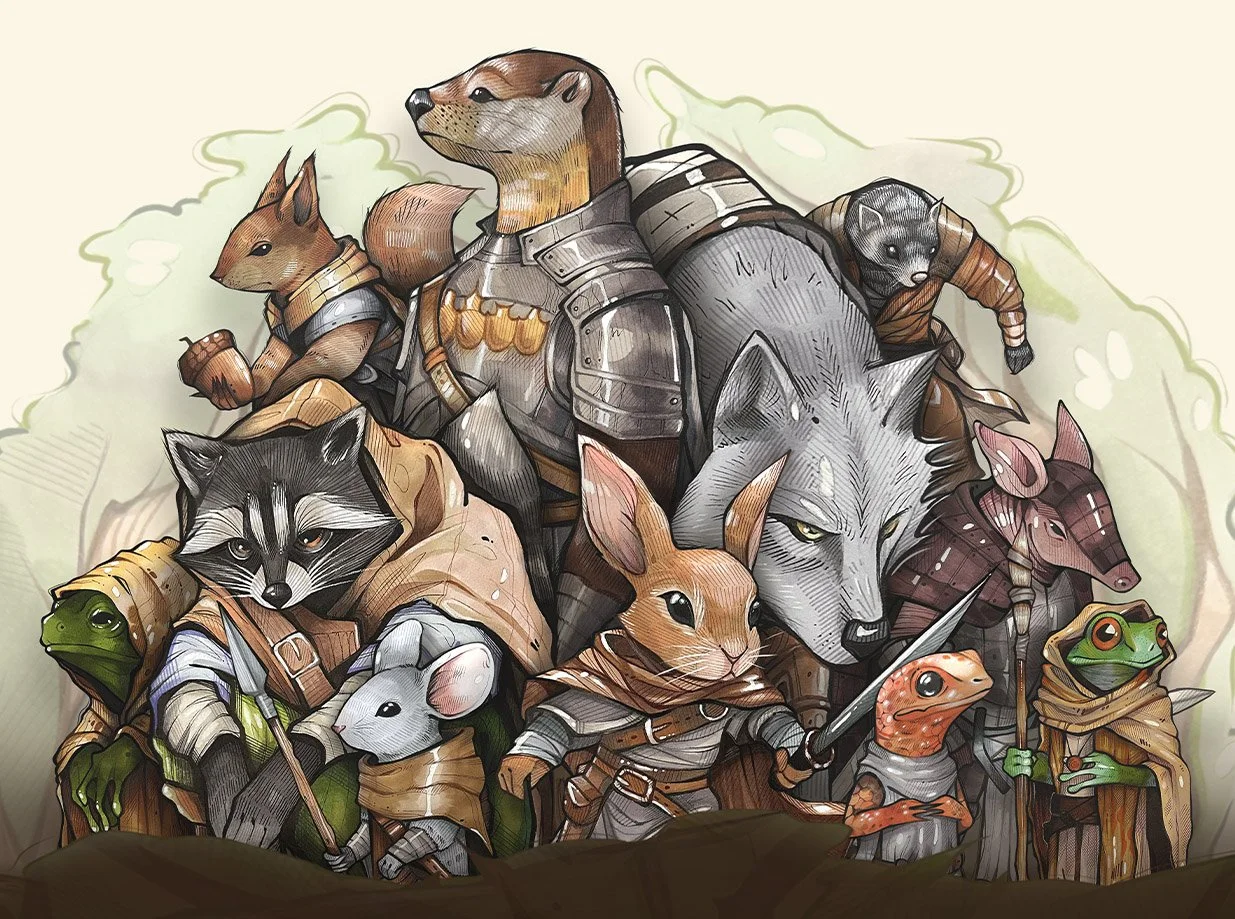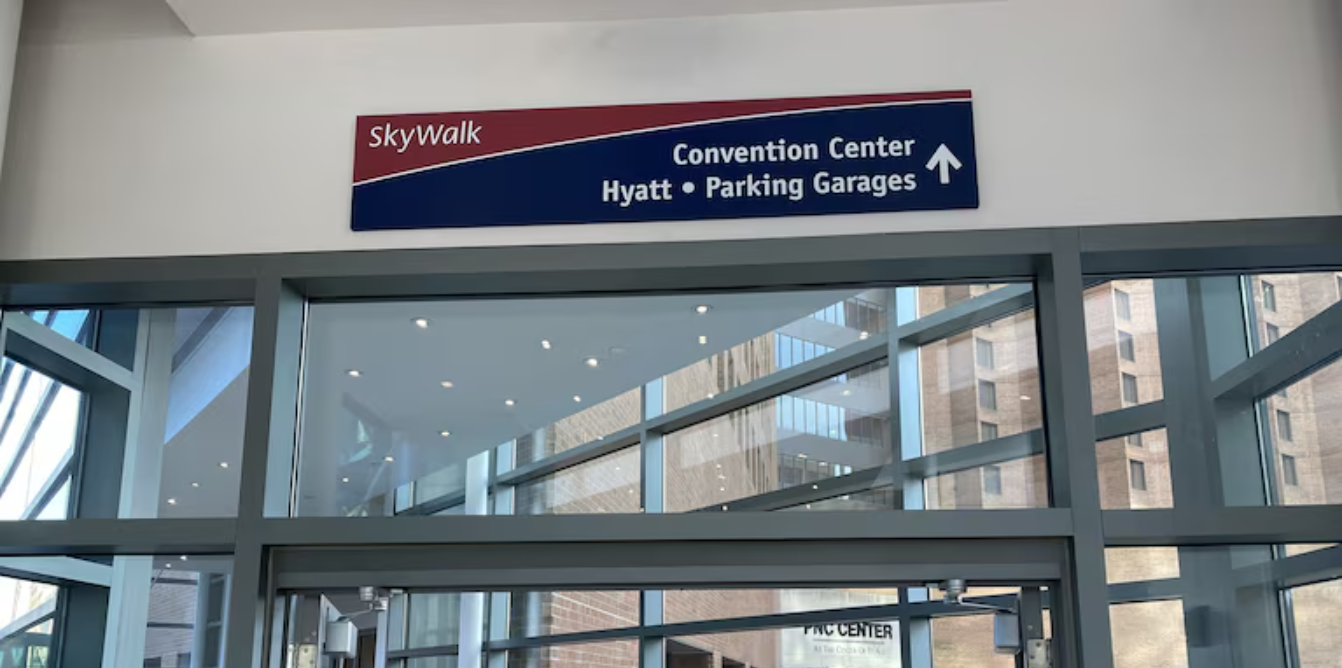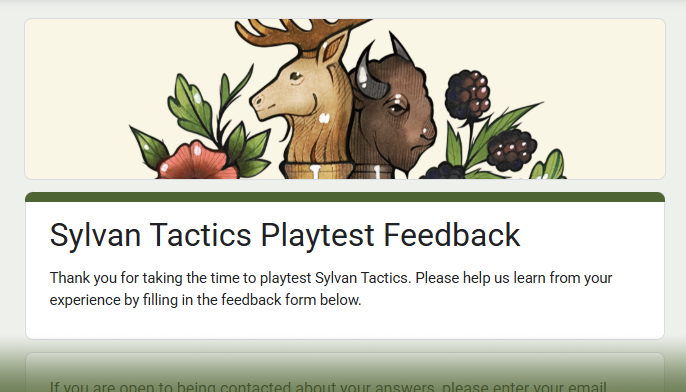Retrospective: What We Learned Bringing Sylvan Tactics to Gen Con’s First Exposure Playtest Hall
Sylvan Tactics is a tactical card-battling game that fuses the timeless movement rules of chess with dynamic card-based combat. Players command woodland creature armies using familiar chess pieces as units while deploying cards to gain powerful abilities, equipment, and battlefield control. It plays as a head-to-head duel where positioning, timing, and card synergy are key to defeating your opponent’s King.
We showcased the game as part of the First Exposure Playtest Hall (FEPH). The FEPH is a Gen Con event that gives unpublished designers a chance to playtest their prototypes with attendees who sign up to give feedback. It’s not a traditional booth or publisher showcase, but a scheduled, low-pressure way to gather feedback from new players in a controlled setting.
Why We Went to Gen Con
We brought Sylvan Tactics to the FEPH at Gen Con 2025 with four main goals:
Market Viability Testing – We wanted honest feedback from players who had no connection to us. Local playtesters often know us personally, which can unintentionally skew responses. Virtual playtesters online can provide some level of unbiased feedback, but since Sylvan Tactics is meant to be a 1v1 game played at a table we hoped that Gen Con would be the perfect place to see what aspects connect the strongest with players.
Balance Testing – The mechanics for the game are pretty far along at this point. Getting in a high number of playtests in a short amount of time was something we hoped would highlight what changes were really necessary to improve general fairness between players.
Publisher Interest – We were curious if Gen Con could lead to conversations with publishers. While we weren’t banking on it, we hoped FEPH would offer “exposure” in the truest sense. (Spoiler: not without groundwork.)
Building a Following – We aimed to grow our early fanbase by meeting enthusiastic players who might follow along with the game’s development or join our online Discord community.
Costs
Here’s a breakdown of what it cost us to attend and showcase our game:
FEPH Registration (4 2-hr sessions) - $400
Hotel (connected to con center) - $1,348
Food & Snacks - $164
Gas (round trip) - $74
T-shirts, posters, handouts (marketing) - $766
Total - $2,752
We treated the trip as part business, part vacation. That mindset helped justify the higher-end hotel and extraneous costs. Our marketing expenses were also much higher than they needed to be. More on that below.
Takeaways and Advice for Future FEPH Designers
1. Print Less Than You Think
We came over-prepared with stacks of business cards, postcards, and full-color sell sheets. In reality, most handouts went to our assigned playtesters and a few folks from adjacent tables. FEPH is not a high-traffic walkup area so you won’t need that many marketing materials. However, keep in mind that you will get steeper bulk discounts for printing higher counts. So if you can print enough handouts to cover several events you might be better off in the long run. Our expense was high in this category, but all our extra handouts will still be useful in the future.
Takeaway: ~200 handouts is plenty for just the FEPH. Save your printing budget (and your luggage weight) for future customer-focused events if you have limited funds. Conversation starters like a standing banner are a better investment.
2. Limit Your Setup to Match Real-World Play
We initially planned to run three simultaneous 1v1 matches per session. But it was too cramped at our small table for teaching and note-taking. We adjusted to just two matches per session (4 players total) and were able to sit in the center with each group to explain rules, answer questions, and observe.
Takeaway: Don’t overextend yourself. Prioritize recreating the kind of play experience someone would actually have at home. It yields better feedback and will help you feel less stressed.
3. Stay Close (if you can afford it…)
Our hotel was connected to the Convention Center via skywalk. That convenience was invaluable for transporting our materials and recovering between sessions. And if you are attending the con as a fan of games you are going to want to minimize travel as much as possible when stashing your haul. Of course, some of this is out of your control as you will have to contend with the Gen Con hotel lottery system. We lucked out and got a great reservation slot that allowed us our pick of nearby hotels.
Takeaway: If budget allows, stay nearby. And remember that FEPH badges will not be distributed until the first day of the con, so you’ll need to buy a separate Gen Con badge of your own first (only one) in order to enter the lottery system to reserve a hotel room. Then, before the con begins, you will be able to get the “placeholder” badge you purchased refunded. The FEPH badges they distribute on the first day are normal 4-day GM badges (2 of them are included with the $400 fee) that will get you into any events you manage to reserve.
4. Stack Sessions Back-to-Back
We ran four separate sessions across two days. In hindsight, we wish we’d scheduled some of those sessions back-to-back to reduce setup and teardown time. However, you may not want to schedule all four playtest sessions back-to-back. You want to make sure you give your voice time to recover. The FEPH can get noisy.
Takeaway: Cluster your sessions to minimize repetitive logistics and leave more room to enjoy the rest of Gen Con.
5. Exposure ≠ Publisher Attention
The “Exposure” part of the FEPH name doesn’t guarantee visibility to publishers. They’re not all browsing the playtest hall. If you want to demo for a publisher, you’ll need to contact them ahead of the con and set up an appointment. We did not do this and I kind of wish we had. I’m still not sure if we will actively pursue third-party publishers, but I think it would have been valuable experience to do more pitches and demos at the show.
Takeaway: Don’t expect to be “discovered” at FEPH. Plan your pitches before you arrive.
6. But You Can Still Network
Instead of cold-pitching, we simply visited publisher booths and asked if they accept external design submissions. Everyone was friendly and appreciated that we didn’t ambush them mid-sale with a prototype. We collected several business cards of companies that I would love to work with even if it doesn’t work out for Sylvan Tactics specifically.
Takeaway: It’s OK to be low-pressure. Build connections now that you can follow up on later with a polished pitch or post-Kickstarter interest.
7. Use Surveys for Feedback and Email Collection
We used a QR code to link to a concise Google Form, gathering feedback on aspects such as "Fun Factor," "Originality," and "Would You Purchase?" While ample time was dedicated to direct feedback discussions, the form proved valuable for collecting more objective input. Additionally, the form offered an option for testers to subscribe to our newsletter. These playtesters will be recognized in our rulebook or on our website.
Takeaway: Having players complete the form on-site (or soon after) gave us measurable feedback and helped build our mailing list.
8. Demographic Targeting Helps
We were able to request certain demographics through FEPH. For example, we asked for sessions where two women could play against each other, since we hadn’t observed that matchup in earlier tests. This really helped us to craft some thoughts related to how we might market the game to women and different age groups.
Takeaway: FEPH can support diversity goals if you ask. Take advantage of that structure to get well-rounded feedback.
9. Don’t Expect to Grow a Following at FEPH Alone
FEPH doesn’t generate much walk-up traffic. Our playtesters were a mix of assigned and self-selected. So while it was great for structured play, it didn’t result in many new followers or Discord signups.
Takeaway: Treat FEPH as a lab, not a stage. It’s a place to improve your game, not to launch your community.
Our Post-FEPH Playtest Stats
Here’s a snapshot of how players rated Sylvan Tactics during our sessions:
Fun Factor: 4.5 / 5
Originality/Uniqueness: 4.4 / 5
Meaningful Player Choices: 4.3 / 5
Ease of Learning: 4.0 / 5
90% said they’d play again.
63% said they’d buy it at launch, and another 32% said they’d consider it.
Final Thoughts
Was it worth it? For us, it was absolutely worth it. However, if your interest in Gen Con isn't primarily as a gaming fan, your perspective on the value might differ. We were fortunate to combine business with leisure, which, at least in our minds, helped offset the overall expenses.
Bringing Sylvan Tactics to Gen Con gave us clarity, validation, and a big to-do list of improvements. It wasn’t cheap, and it was a lot of work, but if you’re serious about playtesting your game with fresh eyes and honest feedback, FEPH is one of the best options out there. You simply will not find this many eager and willing playtesters in any other venue.
If you’re planning your first trip to Gen Con as a designer, feel free to reach out! We’re happy to share more of what we’ve learned.








